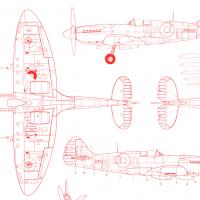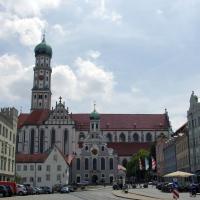Cantata for soprano & baritone soloists,
chorus & orchestra
- Agnus Dei: Lento
- Beat! Beat! Drums: Allegro moderato
- Reconciliation: Andantino
- Dirge for Two Veterans: Moderato alla marcia
- The Angel of Death has been abroad: L’istesso tempo
- O man greatly beloved
The distinctive verse of Walt Whitman, notable for its powerful use of language and equally potent alliterative rhythms, proved to be an inspiration to Vaughan Williams throughout the composer’s life. He wrote his cantata Dona nobis pacem in 1936, and in what proved to be an anticipation of Benjamin Britten’s War Requiem (1960), he opted to mix the potent poetry of war with texts from the Latin Mass,
along with other extracts beyond.
The points of reference are at once bold and original: three contrasting poems by Whitman are framed by words taken from the Latin Mass, the Old Testament prophets, and the famous House of Commons speech that John Bright made at the time of the Crimean War.
An important musical influence for Vaughan Williams was Verdi’s Requiem, a work he admired very much. For the music of Verdi’s Kyrie movement is echoed at several points in the opening section of Dona nobis pacem. The link can be made, for example, in the setting of the word ‘Dona’. Similar parallels can be found in the treatment of Beat! Beat! Drums!, which Vaughan Williams employs as an equivalent to the convention of the Dies Irae. At this point he makes full and effective use both of the jagged alliterative potential of the text, and of the powerful percussion battery among the large orchestra. Thus he creates with the utmost immediacy the intense noise and pervasive disruption of warfare.
That Vaughan Williams should feel able to depict such sonic intensity with conviction is no surprise. It is conceivable that the artillery barrages of the Western Front returned to haunt him via the medium of Whitman’s beating drums.
The cantata also contains music composed some twenty years earlier, in the form of the Dirge for Two Veterans, but this proves to be less stylistically problematic than it might have been.
Perhaps in unconscious mourning for the friends, and the way of life, that were lost in the trenches, in Reconciliation as well as during the other 1930s portions of the work, Vaughan Williams returns to the style of his pre-war music. The particular point of reference is the London Symphony, a masterpiece that was first performed in 1914, just a few months before hostilities began. Moreover, the imposing march of the Dirge is linked to Beat! Beat! Drums! by the appearance of similar rhythmic motifs.
These central movements confirm that the work has the characteristics of a Requiem. However, Dona nobis pacem is also concerned with the living and their future aspirations. Thus John Bright’s memorable words, ‘The Angel of Death has been abroad throughout the land; you may almost hear the beating of his wings’, constitute an explicit reference to the growing fears of the mid-1930s. At this stage it was still possible to express optimism, however; so with the aid of bells, glockenspiel and organ, Vaughan Williams sounds out a joyful Gloria in the closing bars. Yet even now there remains a certain supplication, since the soprano continues to sing ‘Dona nobis pacem’. The recognition that these prophetic visions had not yet come to pass was shortly to be driven home with a ferocity no-one could have anticipated.
This is no period piece, however, and the prayer which concludes this visionary masterpiece retains its urgency to this day.
Composer: Vaughan Williams Wiki Link: http://en.wikipedia.org/wiki/Dona_nobis_pacem_%28Vaughan_Williams%29 Title of Musical Work: Dona Nobis Pacem
